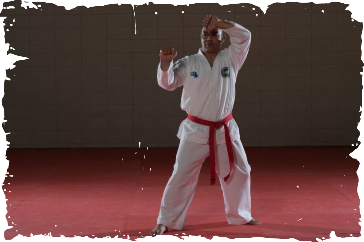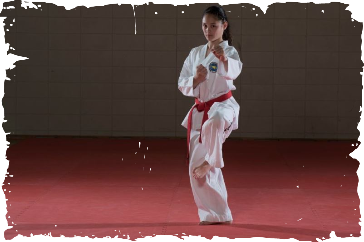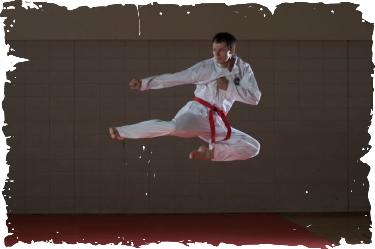Gup Patterns and Videos
Below you will find videos of each of the Coloured Belt Gup Patterns. From the basic punching and blocking exercises through to the 1st Gup Pattern Choong Moo. There are a total of 24 patterns in Taekwon-Do, as created by our Founder General Choi Hong Hi. The videos are a guide only and are there to assist you in learning your patterns. If you are unsure of any particular technique, remember that your instructor is your first point of call.
Want to know more about the patterns and their historical connections? Click here.
Want to know more about the patterns and their historical connections? Click here.
Saju Jirugi
Saju Jirugi - Four Directional Punch is a basic set of fundamental movements learned by the beginning student of Taekwon-Do (14 movements).


Saju Makgi
Saju Makgi - Four Directional Block is a basic set of fundamental movments learned by the beginning student of Taekwon-Do (16 movements).


Chon-Ji Tul 천지
Chon-Ji means literally "the Heaven the Earth". It is, in the Orient, interpreted as the creation of the world or the beginning of human history, therefore, it is the initial pattern played by the beginner. This pattern consists of two similar parts; one to represent the Heaven and the other the Earth (19 Movements).


Dan-Gun Tul 단군
Dan-Gun is named after the holy Dan-Gun, the legendary founder of Korea in the year of 2333 B.C. (21 Movements).


Do-San Tul 중근
Do-San is the pseudonym of the patriot Ahn Chang-Ho (1876-1938). The 24 movements represent his entire life which he devoted to furthering the education of Korea and its independence movement.


Won-Hyo Tul 원효
Won-Hyo was the noted monk who introduced Buddhism to the Silla Dynasty in the year of 686 A.D. (28 Movements).


Yul-Gok Tul 율곡
Yul-Gok is the pseudonym of a great philosopher and scholar Yi I (1536-1584) nicknamed the "Confucius of Korea". The 38 movements of this pattern refer to his birthplace on 38 latitude and the diagram represents "scholar".


Joong-Gun Tul 중근
Joong-Gun is named after the patriot Ahn Joong-Gun who assassinated Hiro- Bumi Ito, the first Japanese governor-general of Korea, known as the man who played the leading part in the Korea- Japan merger. There are 32 movements in this pattern to represent Mr. Ahns age when he was executed at Lui-Shung prison (1910).


Toi-Gye Tul 퇴계
Toi-Gye is the pen name of the noted scholar Yi Hwang (16th century), an authority on neo- Confucianism. The 37 movements of the pattern refer to his birthplace on 37 latitude, the diagram represents "scholar".


Hwa-Rang Tul 화랑
Hwa-Rang is named after the Hwa-Rang youth group which originated in the Silla Dynasty in the early 7th century. The 29 movements refer to the 29th Infantry Division, where Taekwon-Do developed into maturity.


Choong-Moo Tul 충무
Choong-Moo was the name given to the great Admiral Yi Soon-Sin of the Lee Dynasty. He was reputed to have invented the first armoured battleship (Kobukson) in 1592, which is said to be the precursor of the present day submarine. The reason why this pattern ends with a left hand attack is to symbolize his regrettable death, having no chance to show his unrestrained potentiality checked by the forced reservation of his loyalty to the king (30 Movements).
First Video: As previous Gup Patterns above. Second Video: Pattern Demo and then applications.
First Video: As previous Gup Patterns above. Second Video: Pattern Demo and then applications.




